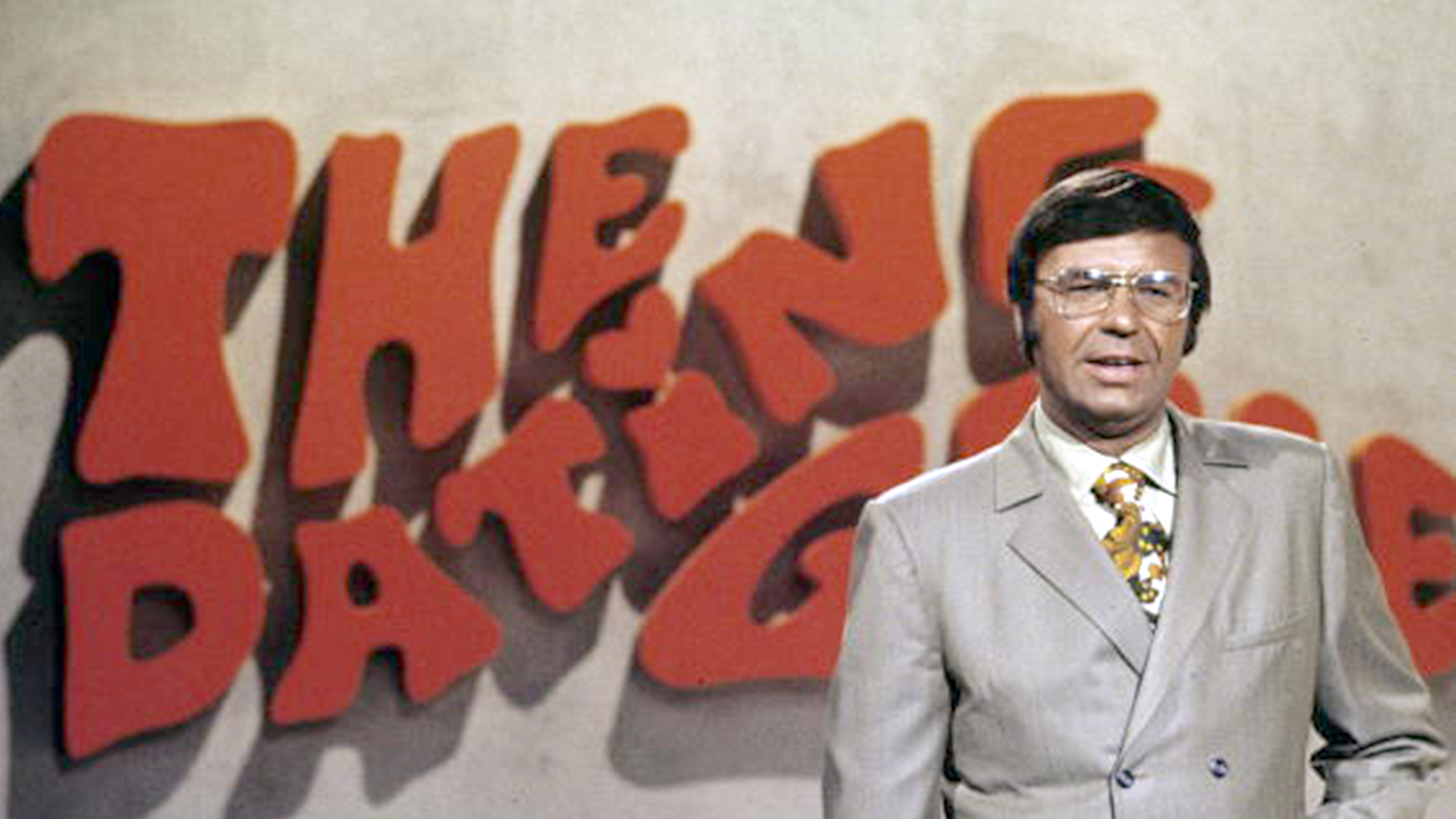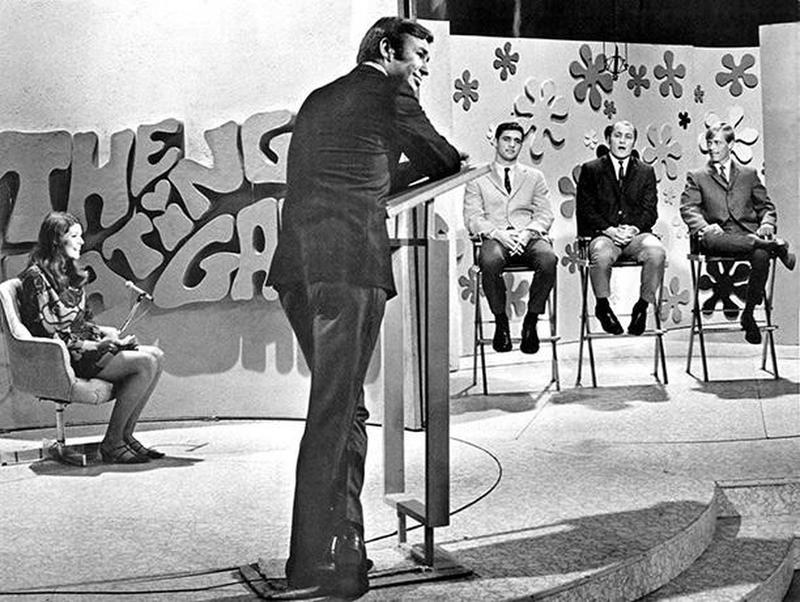This month we are learning about game shows, and no one is better known for game show hosting than Bob Barker. Born in 1923 in the state of Washington, Robert William Barker was best known for hosting the two games shows we discussed the past two weeks: Truth or Consequences and The Price is Right.

Barker’s family did not have much money, and he spent most of his youth on the Rosebud Indian Reservation in Mission, South Dakota with his mother. The U.S. Indian Census Rolls list Barker as an enlisted member of the Sioux tribe. His mother was a school teacher, and his father was an electrical line worker for the state of Washington. When his mother remarried, she and Bob moved to Springfield, Missouri. Bob met Dorothy Jo Gideon at an Ella Fitzgerald concert when he was in Missouri going to high school. They began dating at that time. Barker received a basketball scholarship at Drury University in Springfield, Missouri. Later the street behind Drury University would be changed to Bob Barker Boulevard. Barker has contributed more than 3 million dollars to the University as well.

Bob enlisted in the Navy during WWII, hoping to train as a fighter pilot but did not have any active duty. On one of his military leaves, he and Dorothy married. After he was discharged, he returned to Drury, graduating with a major in economics. During his college studies, he was also working part time in radio on KTTS FM. Bob and Dorothy moved to Florida, and he took a job as news editor and announcer at WWPG AM in Palm Beach. In 1950, he moved to California to pursue a career in broadcasting. He received his own radio show in the early fifties, The Bob Barker Show. Ralph Edwards caught Barker’s show and thought he had a nice voice and asked him to work on Truth or Consequences.
In 1956 he began his game show hosting with Truth or Consequences. In 1967 he was asked to host the Miss Universe and Miss USA pageants which he continued to do until 1987. Bob joined The Price is Right in 1972. Barker would win 19 Emmys and the Lifetime Achievement Award. Before Bob Barker, emcees dyed their hair to look younger on the air. In 1987 Barker decided to stop coloring his hair and go with his natural gray.

There was one disturbing part of Barker’s career which never seemed to affect his emcee duties. In 1994, one of the former models, Dian Parkinson filed a lawsuit alleging sexual harassment after she and Barker had a three-year affair. She later dropped the lawsuit, citing it was putting her under too much stress. The following year, another long-time model, Holly Hallstrom, sued Barker saying he had fired her because she gained weight caused by one of her medications and because she would not testify falsely in Parkinson’s case. Barker countersued for slander, but Hallstrom won the case in 2005. Then in 2007, Deborah Curling, a CBS employee on the show, filed a suit against Barker and the producers saying that she was forced to quit her job after testifying against Barker in a lawsuit made by a former producer. Barker was later removed from the lawsuit and later the case was dismissed.

In 2007 he decided to retire, reaching fifty years in the entertainment business. Bob would revisit The Price is Right three times after retirement: in 2009 he showed up to promote his recent biography, in 2013 he returned to the set to celebrate his 90th birthday, and in 2015 he walked out as the emcee instead of Carey for an April Fool’s Day prank.
The autobiography is titled Priceless Memories and discusses his fifty years in show business. It was authored with LA Times book review editor Digby Diehl.

Bob has made other appearances in addition to his game-show hosting duties.
In 1960 Bob received a part on Bonanza, playing Mort.
In the seventies, he hosted the Pillsbury Bake-Off. During the seventies and eighties he also took over hosting duties for the Rose Bowl Parade several times.
Barker made his way around the talk show circuit, appearing on Dinah, Larry King Live, The Arsenio Hall Show, Crook & Chase, Donny & Marie, The Rosie O’Donnell Show, The Ellen DeGeneres Show, The Wayne Brady Show, The Late Show with David Letterman, and the The Late Late Show with Craig Ferguson.
Barker could be seen on a number of game shows as a celebrity. He and his wife were on Celebrity Tattletales, and he sat in for Richard Dawson after he left Match Game.

In 1996, he appeared in his first big-screen film, playing himself in Happy Gilmore.
In 2009 he even managed to guest host a show for WWE Raw or The Price is Raw. He agreed to be a rotating host for Mike Huckabee’s show beginning in 2010.
He took part in a State Farm commercial when a woman who needed a new car was presented with her new car by him. He made a few public service announcements for the networks and did some campaigning for a Republican candidate in Florida.
And if all that was not enough, he voiced the character of Bob Barnacle on Sponge Bob Square Pants.

When his wife Dorothy died from lung cancer in 1981, he decided to become a vegetarian and an animal activist. He worked for animal rights and gave his support to such groups as The United Activists for Animal Rights and the Sea Shepherd Conservation Society. In 2010 the Society secretly purchased and outfitted a ship to intercept Japanese whaling operations which Barker contributed $5,000,000 to. In 1989 he created the DJ&T Foundation for his wife and mother and the fund has contributed millions of dollars to fund animal neutering and animal rescue and park facilities construction around the US. He was known for reminding viewers to have their pets spayed or neutered at the end of his shows. In 1987, Barker requested the removal of real furs on the Miss USA pageant and when the show refused, he quit as emcee. In 2004, Bob donated one million dollars to Columbia Law School to support the study of animal rights. In 2009 he wrote several businesses in North Carolina to ask them to close their bear exhibits. In 2010 Barker gave 2.5 million dollars to renovate a building for PETA’s office which opened in 2012.
In 1999, Barker was asked to testify before Congress regarding proposed legislation that would prohibit traveling shows with elephants. During his preparation, he realized something was wrong with his hand. He was admitted to the hospital where he was diagnosed with a partially blocked left carotid artery. The procedure was successful and he returned to work a few months later. He had a stroke in 2002 and was hospitalized for six weeks. Shortly afterward, he underwent surgery for prostate cancer. He also experienced mild bouts of skin cancer over the years.

Bob had several episodes with falls and one bout with severe back pain. For the last decade or so he was confined to his house with a caretaker, primarily going out only to visit his wife’s gravesite.
It’s hard for me to disregard the lawsuits brought against Barker while hosting The Price is Right. Before that time, I thought he was a pretty great guy. He has had a long and full career, becoming a celebrity and able to pursue his own causes to help animals. Many of us who grew up in the seventies and eighties have fond memories associated with watching The Price is Right. You have to give him credit for helping to make the show a successful one for decades.




















